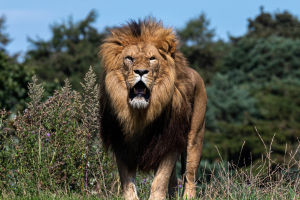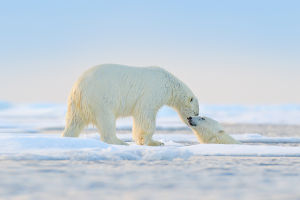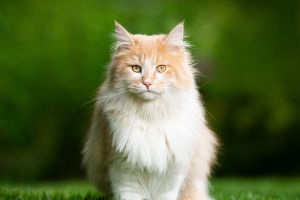When we think of nature's most captivating creatures, the dragonfly undoubtedly comes to mind. With its stunning, delicate wings and predatory prowess, the dragonfly is a true marvel of the insect world.
Not only do these insects possess a unique ability to hover in midair, but their impressive hunting skills make them one of nature's most skilled aerial predators. In this article, we will explore the fascinating life of the dragonfly, including its physical traits, behavior, and ecological importance.
Physical Characteristics: A Master of Flight
Dragonflies are easily recognizable due to their large, compound eyes and slender bodies. They belong to the Odonata order and are part of the Anisoptera suborder, which is known for their unequal wings. Their wings, often transparent and veined, are one of the defining features of these insects. The dragonfly’s head is round, with large eyes that offer them an exceptional field of vision—nearly 360 degrees.
These insects have two pairs of wings that allow them to fly in multiple directions, including hovering and flying backward. Unlike most other insects, dragonflies can also perform incredibly precise and agile maneuvers midair. This makes them not only skilled hunters but also difficult to escape from when they are on the prowl.
Diet and Hunting Techniques: Aerial Predators
When we think about a dragonfly's diet, we can imagine a fierce hunter in action. These insects are carnivorous and primarily feed on mosquitoes, flies, bees, butterflies, and other small insects. Some species even have the ability to catch and consume smaller fish. Dragonflies use their six legs, which are covered in coarse hairs, to grab onto their prey midflight. They are capable of capturing their prey in midair with such precision that it seems almost effortless.
A dragonfly’s mouthparts are equipped with powerful mandibles that allow them to tear their prey apart with ease. In fact, some species of dragonflies can consume food equal to their body weight in just a few hours. Their predatory nature plays an important role in controlling insect populations, particularly mosquitoes, which are often pests to humans.
Habitat and Lifecycle: From Water to Air
Dragonflies typically live near water sources, such as ponds, lakes, streams, and wetlands. Their larvae, also known as nymphs, live in the water and can spend several years developing before they emerge as adults. The dragonfly’s lifecycle is fascinating: after mating, female dragonflies lay their eggs in or near water. Once hatched, the nymphs begin their journey of growth, undergoing multiple molts before finally transforming into adults.
This transformation, known as metamorphosis, is one of the most remarkable aspects of their life cycle. During the final molt, the nymph climbs out of the water, and the adult dragonfly emerges. The adult dragonfly's life is spent flying and hunting for prey, but it only lasts a few weeks to a few months, depending on the species.
Ecological Importance: Nature’s Pest Control
Dragonflies play a significant role in the ecosystem, especially in controlling the population of other insects. Their role as natural pest controllers cannot be understated, as they help manage populations of mosquitoes and other small flying insects. In fact, dragonflies are often seen as beneficial insects due to their ability to reduce the spread of diseases carried by mosquitoes.
Moreover, their presence indicates healthy aquatic environments, as they require clean, well-oxygenated water for their larvae. For this reason, dragonflies are often used as bioindicators, helping scientists assess the health of ecosystems.
An Endless Fascination with Dragonflies
In conclusion, dragonflies are more than just beautiful creatures that grace the skies. They are incredible hunters with impressive abilities that allow them to survive and thrive in the wild. Their fascinating life cycle, their role in pest control, and their unique flying abilities make them a subject of endless fascination for nature enthusiasts and researchers alike.
So, the next time you see a dragonfly hovering near water, take a moment to appreciate the extraordinary creature it truly is!
Lykkers, have you ever seen a dragonfly up close while it's hunting? It’s quite a sight to behold! Share your thoughts with us or let us know if you've witnessed any interesting dragonfly behavior!


